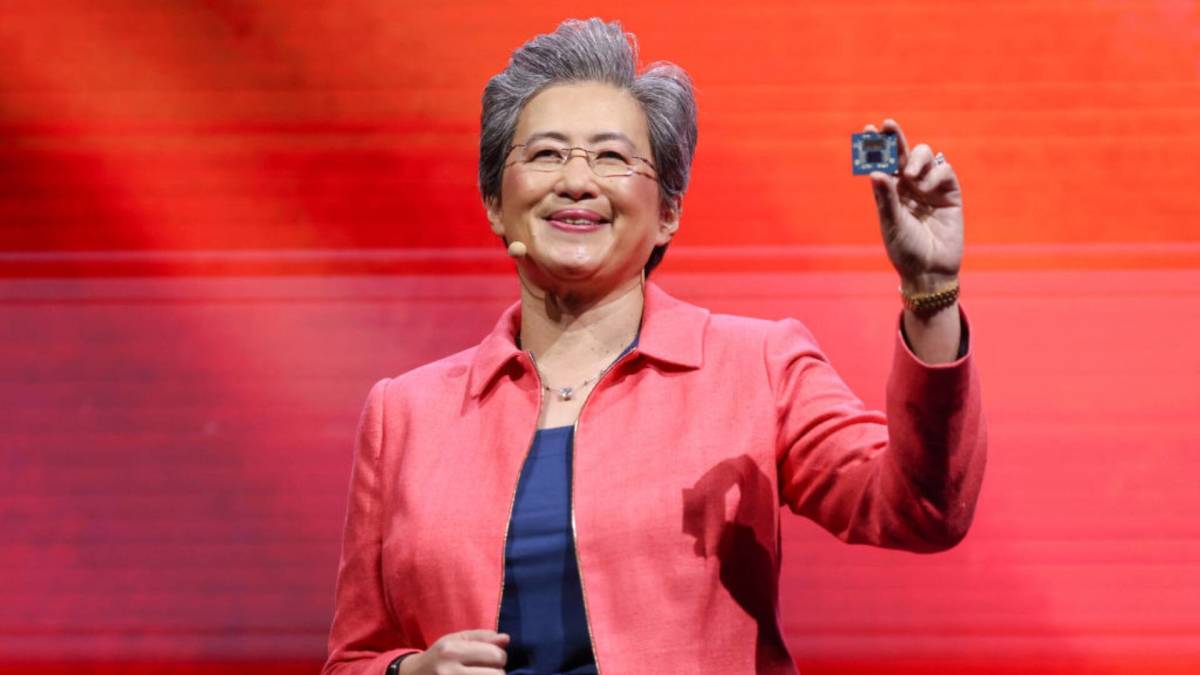Advanced Micro Devices (AMD) has spent 2025 clawing from “credible challenger” to a true second engine in the AI arms race.
Case in point is that its management bumped an annual cadence in accelerators with MI325X heading into mass production and MI350 slated for later this year, while unveiling a power-packed new AI server plan for 2026.
Perhaps the biggest signal this year was that OpenAI is set to adopt AMD’s latest chips, putting real logos behind its rather ambitious roadmap.
The stock has ridden that momentum.
AMD shares are up more than 30% year-to-date, despite the air pockets around data-center prints and export-license headwinds. Following a summer wobble, the tape still shows a wide 52-week range of $76 to $187, which underscores how hot and volatile the AI trade has been.
Enter the week’s curveball in Nvidia’s (NVDA) massive $5 billion stake in Intel (INTC) , along with a multi-year product pact that pipes NVLink deeper into x86 while teasing PC SoCs blending Intel CPUs with RTX GPU chiplets.
On the face of it, it’s clearly another feather in Nvidia’s cap, adding to its moat in both data center and client, and making life tougher for AMD. Then again, the stake is relatively small compared to Nvidia’s powerful scale, and the timelines are multi-year, which effectively mutes near-term impact.
However, we now have a major twist with a top Bank of America analyst, Vivek Arya, and his team dropping an unexpected take on AMD, post the Nvidia/Intel tie-up.

Image source: Cheng/AFP via Getty Images
BofA’s Vivek Arya stands by AMD, even amid Nvidia-Intel deal
AMD stock has been jittery this past week on the back of the Nvidia-Intel deal, but Bank of America’s Vivek Arya, a five-star name on Wall Street, just reiterated his buy rating and $200 price target for AMD (27% upside from current prices).
His case currently rests on AMD’s incredible ability to continue riding secular AI growth while chipping away at CPU market share from Intel, even with Nvidia’s new $5 billion bet on Intel.
Related: Apple quietly rewrites the iPhone 17 playbook
Arya feels the price target bump is “justified by AI growth and CPU share gains offset by slower growth in cyclical embedded/console markets.”
In fact, he goes on to say that the Intel-Nvidia collaboration might turn into a tailwind for AMD. That’s because the partnership focuses on x86 architecture, which Intel licenses to AMD, and which essentially underpins PCs and servers, meaning a more robust ecosystem aids both.
More News:
- Qualcomm just made a massive leap into Tesla’s turf
- Cathie Wood goes biotech shopping, shells out $7.7 million
- Veteran economist drops surprise verdict on the S&P 500
On a side note, Arya’s team has also updated its Nvidia view, reiterating a buy rating on Nvidia with a $235 target, while assigning a 37x multiple to 2026 earnings. He feels his take his justified due to Nvidia’s “leading share in fast-growing AI compute and networking markets.”
Key points for Nvidia, Intel, and AMD investors:
- AMD stock is still trading well below Arya’s $200 target.
- Nvidia’s Intel tie-up will strengthen x86, helping both Intel and AMD in the long term.
- In the near term, AMD has healthy wiggle room to expand without new competitive headwinds.
Nvidia-Intel: what the deal is, why it matters
Nvidia agreed to buy $5 billion worth of Intel’s common stock and partner on “multiple generations” of custom data center and PC products.
Intel will be involved in the design and manufacture of custom x86 CPUs, including NVLink baked in, while Nvidia will layer those Intel chips into its rack-scale AI platforms. So in essence, Nvidia gets a bigger x86 beachhead, while Intel gets a powerful GPU ally.
Related: Moody’s stuns with urgent call on Oracle’s future
For Nvidia, this leans into strength.
For perspective, it posted Q2 FY26 revenue of $46.7 billion, which jumped 56% year-over-year as AI demand keeps ripping, while Data Center sales were $41.1 billion. Moreover, independent trackers peg Nvidia’s share of data-center AI accelerators at a massive 90%+.
For Intel, the optics and access matter, and the announcement led to a massive 23% one-day pop in Intel stock.
- Roadmap: Integrated laptop SoCs layer in Intel CPUs with Nvidia RTX GPU chiplets, which is a massive swing at reclaiming PC leadership.
- Impact: Nvidia broadens x86 reach and solidifies its AI moat, while Intel gains relevance and design wins in data center and client space.
- Timing: Products are multiple years out, so near-term sales impact is modest, but optics become even more favorable for Nvidia.
Related: Jim Cramer drops shock call on Magnificent 7 stocks
#Bank #America #shocks #AMD #stock #verdict #post #NvidiaIntel #deal